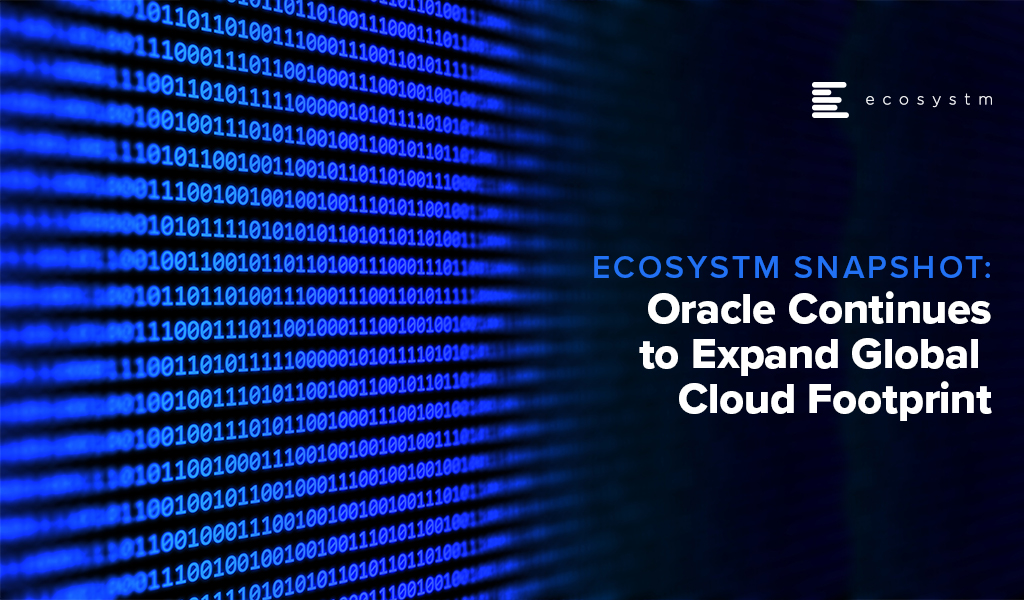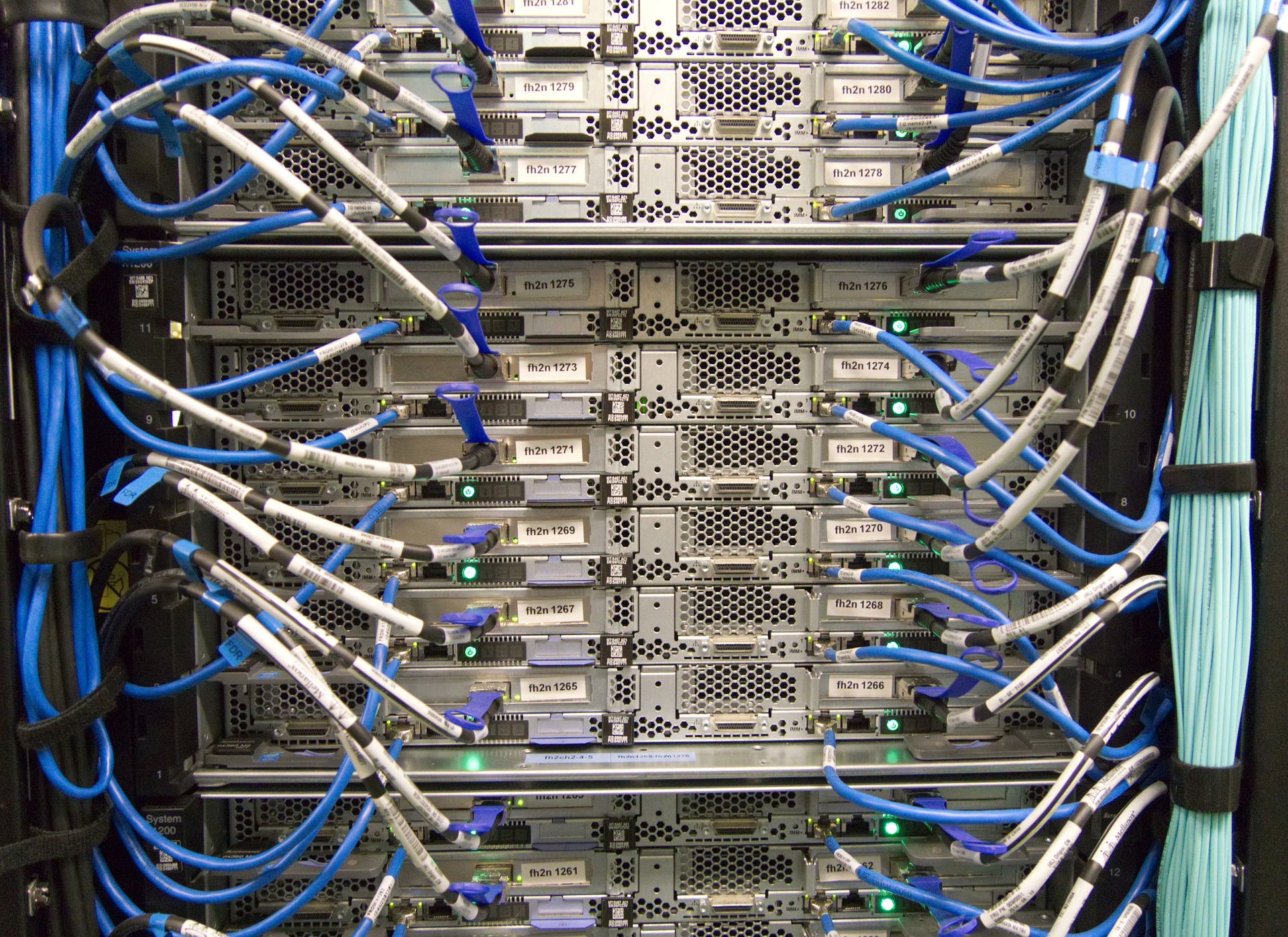In the Top 5 Cloud Trends for 2020, Principal Analyst Claus Mortensen observed that 2020 is a do-or-die year for Oracle if they wanted to remain as a key contender in the Cloud market. Mortensen said, “Oracle has not been able to break into Cloud in the same way as their competitors and has so far not made the same “leap of faith” into this area as similar companies have. Unless the company makes a clear decision about their Cloud strategy and succeeds in communicating it to the market in 2020, Oracle may quickly find itself more of a niche Cloud player going forward.”
Oracle’s intentions to remain one of the leading global Cloud providers becomes clear as they actively expand their global coverage. Last week Oracle announced that, as part of their ongoing regional expansion plan, they have added local regions in Jeddah (Saudi Arabia), Melbourne (Australia), Osaka (Japan), Montreal (Canada) and Amsterdam (The Netherlands). This expands the reach of Oracle’s Generation 2 Cloud to 21 independent locations, and Oracle intends to further add 15 locations by the end of 2020. At OpenWorld last year, Oracle had announced their plans to have Cloud sites dedicated to the enterprise market as well as government customers.
Dr Alea Fairchild, Principal Advisor Ecosystm, thinks that Oracle appreciates the needs of their enterprise customers. “Oracle understands the sensitivity of the enterprise to the location and availability of their data, which remains an issue with Cloud implementations involving large data sets. They have broken some ground as the first public Cloud vendor with data centres in Saudi Arabia, and are putting efforts in to offer a minimum of two regions in almost every country in which they operate,” says Dr Fairchild. “From a corporate user’s perspective, regional data management and appropriate licensing models are still sensitive spots when it comes to database management.”
Getting Ready for the Hybrid Cloud Market
Oracle also appears to be ramping up for the growing hybrid Cloud market. Ecosystm research shows that more than a third of global organisations have adopted the hybrid Cloud and this will only increase. Given the increased uptake of hybrid and multi-cloud environments, Oracle offers preconfigured links between Oracle and Microsoft Azure cloud regions in the eastern states of the US, London, and Toronto, as part of the Cloud interoperability partnership announced in June 2019. Last year, saw another mutually beneficial partnership between VMWare and Oracle, that supports their customers’ hybrid cloud strategies, allowing the VMware Cloud Foundation to run on Oracle Cloud Infrastructure. Organisations can also avail technical support for Oracle software running in VMware environments both in on-premise data centres and Oracle-certified cloud environments.
“Oracle’s Generation 2 Cloud is now available in 21 locations and is on track to have a total of 36 Cloud regions up and running by the end of the year,” adds Dr Fairchild. “But when compared to AWS, Microsoft and IBM, Oracle still holds a fraction of the market share. They can be seen as a niche infrastructure provider, but indeed the partnerships with Microsoft and VMware are set to help Oracle’s Cloud business make traction with companies that are adopting multi-cloud strategies.”
Two things happened recently that 99% of the ICT world would normally miss. After all microprocessor and chip interconnect technology is quite the geek area where we generally don’t venture into. So why would I want to bring this to your attention?
We are excited about the innovation that analytics, machine learning (ML) and all things real time processing will bring to our lives and the way we run our business. The data center, be it on an enterprise premise or truly on a cloud service provider’s infrastructure is being pressured to provide compute, memory, input/output (I/O) and storage requirements to take advantage of the hardware engineers would call ‘accelerators’. In its most simple form, an accelerator microprocessor does the specialty work for ML and analytics algorithms while the main microprocessor is trying to hold everything else together to ensure that all of the silicon parts are in sync. If we have a ML accelerator that is too fast with its answers, it will sit and wait for everyone else as its outcomes squeezed down a narrow, slow pipe or interconnect – in other words, the servers that are in the data center are not optimized for these workloads. The connection between the accelerators and the main components becomes the slowest and weakest link…. So now back to the news of the day.
A new high speed CPU-to-device interconnect standard, the Common Express Link (CXL) 1.0 was announced by Intel and a consortium of leading technology companies (Huawei and Cisco in the network infrastructure space, HPE and Dell EMC in the server hardware market, and Alibaba, Facebook, Google and Microsoft for the cloud services provider markets). CXL joins a crowded field of other standards already in the server link market including CAPI, NVLINK, GEN-Z and CCIX. CXL is being positioned to improve the performance of the links between FPGA and GPUs, the most common accelerators to be involved in ML-like workloads.
Of course there were some names that were absent from the launch – Arm, AMD, Nvidia, IBM, Amazon and Baidu. Each of them are members of the other standards bodies and probably are playing the waiting game.
Now let’s pause for a moment and look at the other announcement that happened at the same time. Nvidia and Mellanox announced that the two companies had reached a definitive agreement under which Nvidia will acquire Mellanox for $6.9 billion. Nvidia puts the acquisition reasons as “The data and compute intensity of modern workloads in AI, scientific computing and data analytics is growing exponentially and has put enormous performance demands on hyperscale and enterprise datacenters. While computing demand is surging, CPU performance advances are slowing as Moore’s law has ended. This has led to the adoption of accelerated computing with Nvidia GPUs and Mellanox’s intelligent networking solutions.”
So to me it seems that despite Intel working on CXL for four years, it looks like they might have been outbid by Nvidia for Mellanox. Mellanox has been around for 20 years and was the major supplier of Infiniband, a high speed interconnect that is common in high performance workloads and very well accepted by the HPC industry. (Note: Intel was also one of the founders of the Infiniband Trade Association, IBTA, before they opted to refocus on the PCI bus). With the growing need for fast links between the accelerators and the microprocessors, it would seem like Mellanox persistence had paid off and now has the market coming to it. One can’t help but think that as soon as Intel knew that Nvidia was getting Mellanox, it pushed forward with the CXL announcement – rumors that have had no response from any of the parties.
Advice for Tech Suppliers:
The two announcements are great for any vendor who is entering the AI, intense computing world using graphics and floating point arithmetic functions. We know that more digital-oriented solutions are asking for analytics based outcomes so there will be a growing demand for broader commoditized server platforms to support them. Tech suppliers should avoid backing or picking one of either the CXL or Infiniband at the moment until we see how the CXL standard evolves and how nVidia integrates Mellanox.
Advice for Tech Users:
These two announcements reflect innovation that is generally so far away from the end user, that it can go unnoticed. However, think about how USB (Universal Serial Bus) has changed the way we connect devices to our laptops, servers and other mobile devices. The same will true for this connection as more and more data is both read and outcomes generated by the ‘accelerators’ for the way we drive our cars, digitize our factories, run our hospitals, and search the Internet. Innovation in this space just got a shot in the arm from these two announcements.



